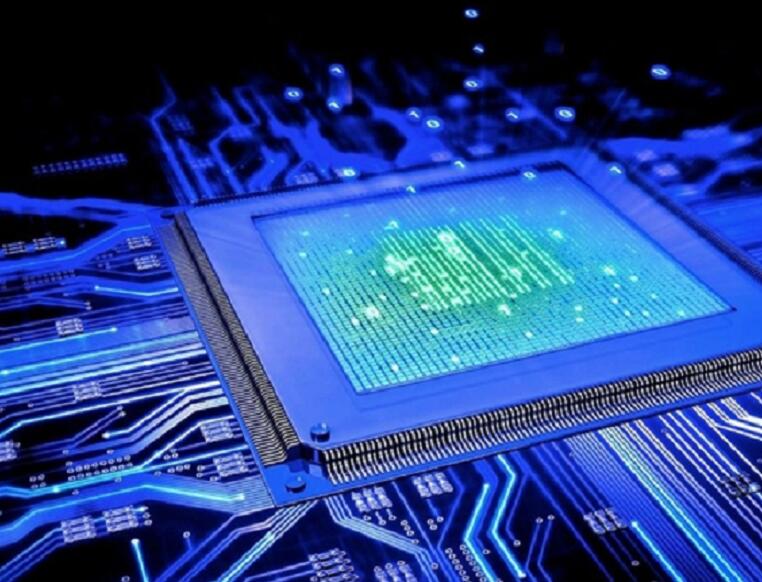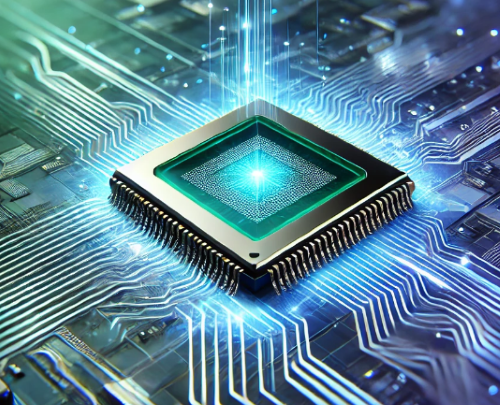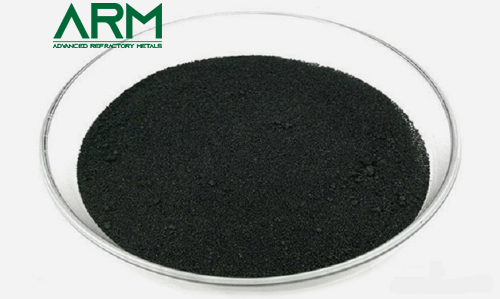Molybdenum Disulfide (MoS2) for Future Chip Revolution

Introduction
As the demand for smaller, faster, and more energy-efficient chips grows, traditional silicon-based semiconductors face limitations. Molybdenum disulfide (MoS₂), a two-dimensional (2D) material has been gaining attention for its promising electronic properties. MoS₂, a transition metal dichalcogenide, offers unique characteristics that could potentially drive the next wave of advancements in semiconductor technology.

Key Properties of MoS₂
- Thin, 2D Structure: MoS₂ can be exfoliated down to a single monolayer, which is just three atoms thick. This ultra-thin structure provides excellent scalability and allows for miniaturized devices.
- High Electron Mobility: MoS₂ has impressive electron mobility, though slightly lower than that of graphene, enabling efficient current flow—an essential quality for high-speed electronics.
- Direct Band Gap: In its monolayer form, MoS₂ has a direct band gap of approximately 1.8 eV, which is crucial for effective on/off switching in transistors. This property makes it an ideal material for logic devices, unlike graphene, which lacks a band gap.
- Mechanical Flexibility: MoS₂’s flexibility opens doors for foldable and wearable electronics, allowing circuits to be integrated into curved or flexible surfaces without compromising performance.
- Thermal and Chemical Stability: MoS₂ can withstand high temperatures and is relatively resistant to oxidation. This stability is essential in various applications where performance and durability are critical.

Applications of MoS₂ in Chip Technology
- Transistors and Logic Circuits: MoS₂-based transistors are showing potential for ultra-thin and low-power electronic devices. Unlike silicon, MoS₂’s direct band gap enables excellent current modulation in transistors, which is critical for low-power applications.
- Photodetectors and Optoelectronics: MoS₂’s direct band gap and ability to absorb visible light make it ideal for optoelectronic devices, such as photodetectors and light-emitting diodes (LEDs). These properties could enable more efficient optical communication in chips.
- Flexible Electronics: Due to its mechanical resilience and flexibility, MoS₂ is suitable for flexible electronic devices. This could include wearables, foldable screens, or circuits embedded in various surfaces, pushing forward the trend of adaptable electronics.
- Memory Devices: MoS₂’s stable and unique electronic properties make it a strong candidate for non-volatile memory applications, providing better performance over traditional memory materials.
Advantages of MoS₂ over Silicon
- Energy Efficiency: MoS₂ transistors can operate at lower voltages, consuming less power, which is essential for sustainable electronic devices.
- Scalability: With its 2D atomic structure, MoS₂ is less prone to short-channel effects, which limit silicon’s effectiveness at smaller scales.
- Flexibility: Unlike brittle silicon, MoS₂ can be integrated into flexible and foldable devices without fracturing, making it ideal for next-generation electronics.
Cases and Recent Studies
Molybdenum disulfide (MoS2) is considered the most promising alternative to silicon. Therefore, in recent years, scientists have maintained a strong interest in the exploration and research of molybdenum disulfide (MoS2).
Recently, the EPFL research team used molybdenum disulfide (MoS2) to develop a new type of "brain-like neuron transmission" computer chip that has the ability to process and store information in the same circuit. This provides new ideas for miniaturization, high efficiency, and energy-saving of computer equipment.
Molybdenum disulfide is a transition metal chalcogenide two-dimensional material (TMDC), with a graphene-like layered structure, and has the characteristics of a direct bandgap semiconductor that graphene does not have.
The molybdenum disulfide is composed of three atomic plane layers (S-Mo-S) stacked. It has a large specific surface area, high electron migration rate, anti-magnetic resistance and radiation resistance, low energy consumption, environmental protection, energy-saving and efficiency, and high stability. Moreover, it can realize large-scale production and is an ideal material for optical and electronic equipment.
For the first time, EPFL researchers have successfully applied the two-dimensional material molybdenum disulfide to a chip that integrates data storage and logic operations. This will subvert the traditional computer model of processing data by the central processing unit (CPU) and then transferring it to the hard disk for storage. Related results are published in "Nature".
According to reports, the new chips are based on floating gate field-effect transistors (FGFETs) and are usually used in flash memory systems in cameras, mobile phones, or computer equipment. These transistors can hold the charge for a long time, and molybdenum disulfide with a thickness of only three atomic layers can not only further reduce the volume of electronic devices but also has a strong sensitivity to the charge stored in the transistor. Therefore, logic operations and data storage functions can be realized at the same time.
Molybdenum disulfide has great application potential not only in semiconductors, nano-transistors, and other optical electronics fields. At the same time, it can also be used as a lubricant, antioxidant, catalyst, etc., and is widely used in aviation, automotive, mining, shipbuilding, bearings, and other industrial fields.
Conclusion
Molybdenum disulfide (MoS₂) stands as a promising candidate for the next generation of semiconductor materials. As research progresses, MoS₂ could drive breakthroughs in high-performance, energy-efficient, and flexible electronic devices, marking a significant step in the evolution of chip technology. With further advancements, MoS₂ could help bring us closer to a future where tiny, powerful, and adaptable chips redefine computing and electronic devices.
Thank you for reading our article and we hope it can help you have a better understanding. If you want to learn more about molybdenum disulfide (MoS2) and other types of refractory metals and alloys, we would like to advise you to visit Advanced Refractory Metals (ARM) for more information.
{{item.content}}
LEVE A REPLY
{{item.children[0].content}}
{{item.content}}






